My 2021 Plant Wishlist
December 21st, 20202021 is fast approaching, over the last, maybe year, maybe 18 months. I’ve developed a plan (a 30 year plan) to turn my property into botanical gardens. I am now thinking very long term with my plantings and I’ve been saving bookmarks of plants I want to get in the next year but I thought, hey, why not make a blog post? I will probably buy all of these, but I’m not sure I will plant them, I have some little trees in containers still I bought last year or even the year before I haven’t decided where to put them yet.
Golden Dwarf Hinoki Cypress Tree (Standard)

I like hinoki cypresses. Why? Well, have you seen one? I cannot explain why, what makes this different from other similar plants. This is not truly a cypress, it is a chamaecyparis, but if you look at the way the scaled needles extend out from a branch it is done in a different and unique way which to me, always makes this plant visually attractive.
I already own at least one of these, and I’ve owned others in the past at prior locations. There was one I owned where the leaf tips were gold and then it was green further down, essentially a two tone plant, that was very nice. These dwarf forms though grow very slowly. The one I have is tiny and it is growing in a bed with some groundcover and it barely sticks up above the ground cover. It is a standard green as well so it sort of blends in. In 10 years things will look different, but 10 years is a long time to wait.
This though, this is a standard form, and it is golden. So the standard form (which I love) means that it is a high graft, they take a straight trunk and graft something on top, usually a dwarf (most weeping cherries are technically made this way). You can find blue star junipers (a dwarf) grafted in standard form which I really really like. This is in my opinion the best way to showcase a globular dwarf evergreen. Essentially it ends up looking like a topiary but without any need for pruning because of the very slow growth rate. I actually have one of those blue star standard form junipers, it is I believe 17 years old, I’ve transferred it when I moved, and the trunk is now a solid 6 inches thick and while I have shaped it with pruning it never truly needed it. Purchase.
So this plant I know the exact spot I will put it, which is near the other hinoki I already have. It will reach high above that ground cover and with the yellow foliage create a nice pop of color.
Amber Glow Dawn Redwood Tree
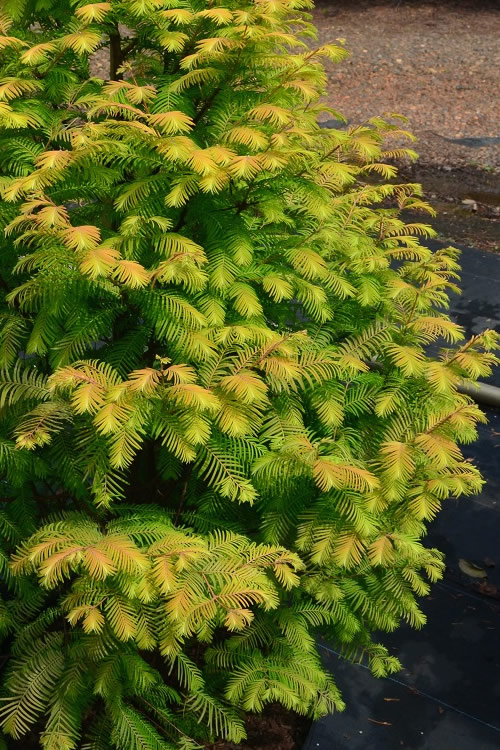
I promise you I don’t just like chartreuse foliage conifers. But hey here is another one! I have always liked metasequoia, they are famously called a dinosaur tree because they were thought to be extinct but then were found growing in a valley in China. They once covered the earth and are related to our redwoods, sequoias, and bald cypresses. A deciduous conifer (my favorite) with small cones they develop really attractive trunks in old age like a bald cypress. Also like a bald cypress they like it moist.
Despite my love for this tree I have struggled growing them. I planted one at my parent’s house in northern Michigan that is growing very well last I knew. Meanwhile one I planted at my old house in southern Michigan always struggled, I hope it is still alive with the new owners. I planted two down here in Tennessee. One way down by my mailbox that received no supplemental watering, always struggled, and finally bought the farm one hot July. The second, a cultivar called gold rush (also yellow, but growing large) is alive. I’ve figured out it prefers acidic soil and I have alkaline limestone and clay up here so I’ve top dressed with some sulfur. It is growing, but not thriving. It also also close enough to the house I can give it supplemental water. I theorize it may have done better if planted elsewhere on my property, perhaps somewhere with some shade or a moister area.
So Amber Glow is a little more gold, or orange, than gold rush, it is also smaller, not really a dwarf but perhaps an intermediate it only gets to about 20 feet. A nice pyramidal form I can probably find a spot for it more readily than another gold rush or species form metasequoia. Purchase.
Merlot Purple Leaf Eastern Redbud Tree
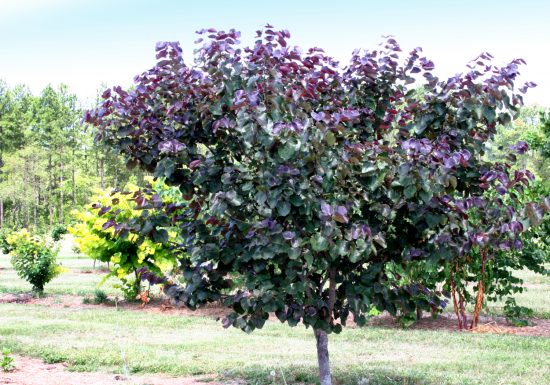
On the topic of trees I haven’t had a ton of luck with, there are the purple leaved redbuds. There is Forest Pansy Redbud which I grew in Michigan and did fine until the heavy branches caused a trunk to split and it never really recovered.
There was also a Ruby Falls redbud which looks the same but is a weeping form that I had tried growing.
Why grow this at all? This isn’t really a dark or red leaved tree, it is solidly in the purple realm, cranberry maybe, wine maybe, but solidly purple to me. Which makes it a rarer foliage color and that makes it very useful for designing garden beds with contrasting foliage colors. I hadn’t thought about growing this tree again and then I stumbled upon this cultivar named “Merlot.”
So why this tree? Well it is a crossbreed that is drought and heat tolerant which makes it perfect for the South and makes it better able to take the sun, which is what I mostly have available as planting locations. If Forest Pansy struggled in the Michigan sun then I knew it wasn’t going to handle the Tennessee sun, but this tree I am hoping will be able to take it. Purchase.
Silver Smoke Arizona Cypress
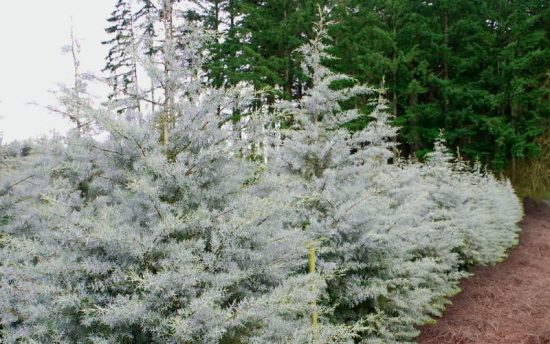
I was just talking about contrasting foliage colors and can you look at this tree? Wow!
So I have struggled for a bit at finding blue evergreens for the South. What I would have used in a more northern climate, the colorado blue spruce, is not happy down here, not at all, though I am growing one cultivar that is so far surviving the others have all died. Then I discovered the arizona cypress. I’ve found it under different names, including “blue ice” or “carolina sapphire.” Regardless of the name it is a nice blue evergreen, albeit with scaled leaves and not true needles, that grows in a similar form to a blue spruce with a similar color and can take the heat. I have planted 5 or 6 of these around my property.
Then I was simply browsing websites and came across this gem. Silver Smoke Arizona Cypress. Outside of silver ragwort I’m not sure I’ve seen a plant this color. So of course because it is rare and unique I have to have it, because that is how I roll. I do not know where I will plant it. I do have one idea where I was thinking to plant yet another blue arizona cypress, so maybe I will plant this silver one there instead. Purchase.
All Gold Golden Pacific Juniper
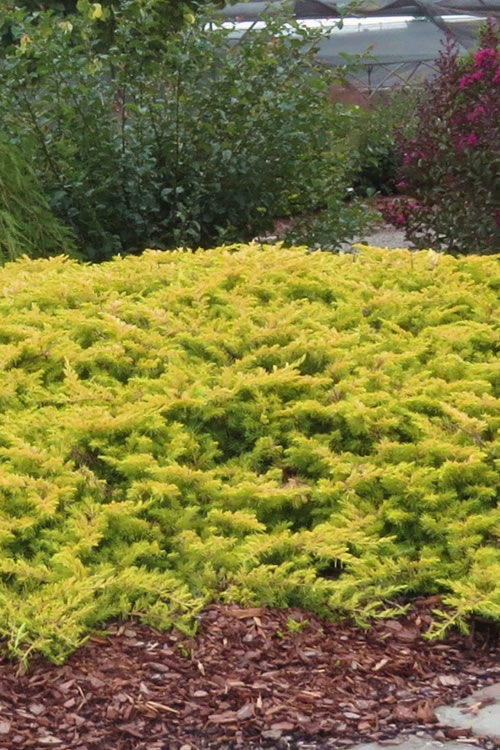
I promise when I set out to write this I didn’t realize it would have so many gold plants. But I am a huge proponent of contrasting foliage colors so it makes sense.
My mulch bill is ridiculous. I go through over a thousand bags a year. I get the bags because I’ve calculated it and it ends up being cheaper than local bulk suppliers. With enough groundcover I can drastically lower my mulch bill so I invest in groundcovers.
These prostrate junipers I think make excellent groundcovers. They are evergreen of course, resilient to pests and diseases, and they spread, but they don’t really overspread. They are very easy to keep in line.
I have several, the common blue rug junipers I have planted in various locations, they’re slow spreaders but they spread. I have one that is quite nice called “Copper Harbor” that does not seem nearly as vigorous, or as gold, as Golden Pacific here. This one gets a little bit of height on it which I like, and being more vigorous means it will cut down on my mulch bill faster.
A lot of this I’m going on faith, because I don’t really own the plant yet, but based on the pictures and my reading this seems like it’ll be a winner for somewhere in my garden. Right now I am thinking I will plant it around the back side of my pond near some Cryptomeria and my hardy sugar cane. Purchase.
Rasen Sugi Cryptomeria Japanese Cedar
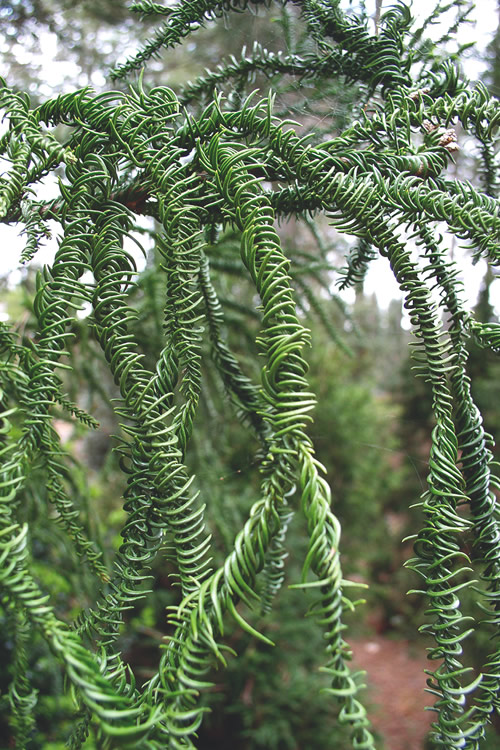
I have am obvious penchant for rare, and unique, and strange plants. As I said above I want to turn my property into a botanical garden and to me that means a plant zoo. You do not go to the zoo to see squirrels and deer, right? You go to see red pandas and lemurs and things you cannot see in your backyard. Rare and unusual things. I would love it if a child tours my place and sees these interesting plants and thinks “wow isn’t that cool” and develops a love of gardening.
Anyways, so, check this guy out, isn’t that cool? I’ve found since moving to the south that I source a lot of japanese plants because of the similar climate. When I want an evergreen that is going to be able to stand up to the southern heat, japanese evergreens are up to the task. Since I cannot really grow spruces cryptomeria has become my new best friend.
I have a handful of the normal species sort. Last summer I also discovered this crazy rare one at a botanical gardens and was able to source it in the Fall, I haven’t planted it yet but I have a spot picked out. It is called Cryptomeria japonica ‘Araucarioides’ or “Snake Branched” japanese cedar and it looks vaguely alien with very long trailing whip like branches. But it is not on my 2021 wishlist because I already own it.
Browsing I discovered “Rasen Sugi” here though, look at those needles on it, the twists, the turns, this is a weird plant. I like weird plants. It grows narrower and smaller and more open than the species cryptomeria so I should be able to find a place to plant it, though I do not yet have a spot picked out. Purchase.
Cedrus libani ‘Green Prince’
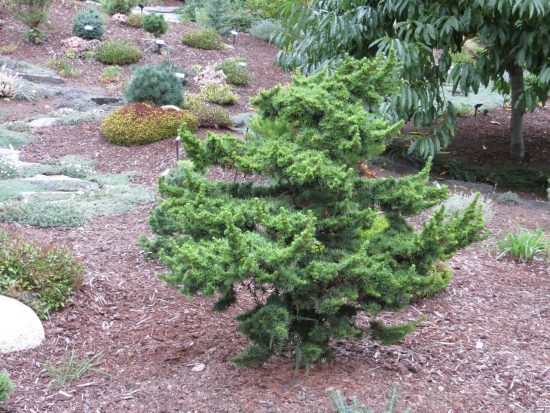
Hey look another green plant! I really like the true cedars, cedrus. They have short needles and an open branching form so they end up giving a very architectural appearance showing off their trunks and branching habits. They’re very structural, which I like.
This guy is a dwarf that ends up growing, without pruning, into a natural bonsai form. I really like the appearance of bonsai but I prefer my plants in the ground so this is a nice way to get that aesthetic without the pots and root pruning. Purchase..
Lion’s Head Japanese Maple
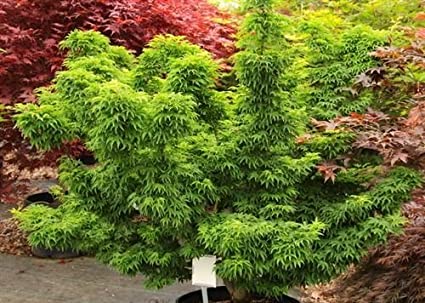
Acer palmatum ‘Shishigashira’ calls to me. I’m drawn to it and I am not entirely sure why. It just feels so bushy, the leaf nodes are so close together its clustered and overloaded and different than other trees. It is a japanese maple but its plain green, right? Not any of the fancy foliage colors japanese maples are known for. Also not really any of the leaf shapes like laceleaf that japanese maples are known for. But what it does have is a short distance between leaf nodes which makes it feel overloaded with leaves and that gives it a very unique garden aesthetic.
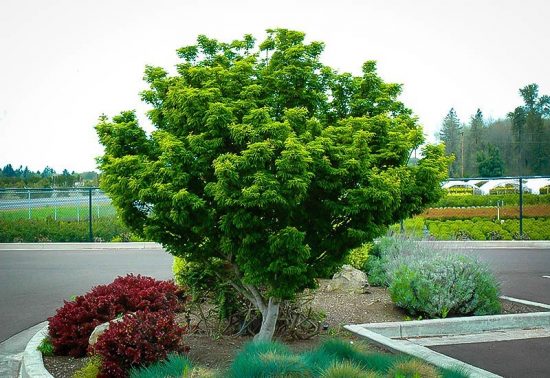
The only other plant I can think of that appears this way is cannabis. Think about the bud cluster on a cannabis plant, it is sort of overloaded with foliage and bud and feels sort of top heavy in that regard. Well, look at these. I almost think they could have named this Acer palmatum ‘Cannabis.’
This does get a nice bold red fall color. It stays small at 15’x12′ and can take some shade, or sun. So it can fit in a lot of places. I really like how the foliage is clustered at the top allowing you to enjoy that while also enjoying some structure of the lower branches and trunk. But mostly what draws me is the very unique heavily foliated terminal branch ends. Purchase.
Australian Tree Fern
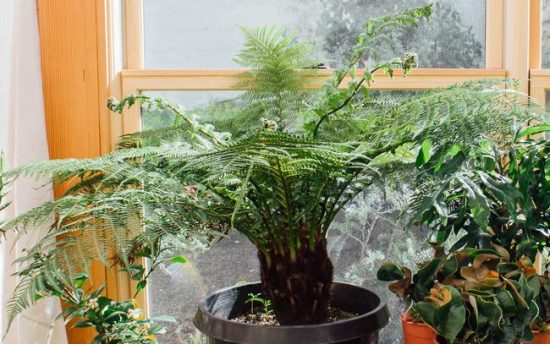
Tossing in a houseplant to mix things up. I saw an Australian Tree Fern for the first time a couple months ago and I knew I had to have it. I ordered one and it is not doing well so I think I will need to order another one. I haven’t quite learned what this plant likes yet.
I’m told it needs frequent misting, and I mist it, but it is still wilting. Is it overwatered? It is a fern, I’m told to keep it moist. The pot does have drainage but I’m watering it and misting it daily. I don’t know what is going on with it but it is close to death so I’ll have to try again.
But I really want one of these in my house. They’re so beautiful, they get big, they feel primordial, like I should buy some little plastic dinosaurs to sit next to the trunk in the pot. Yes, I said trunk, this fern will develop a trunk. In it’s native habitat it will grow very large, but in a container size tends to be more constrained.
Right now I have it in my master bath thinking the added humidity might be a plus, but I worry the light in there isn’t enough. So next I will try my kitchen I think. But I like this plant enough that I will keep buying it until I get it right. Purchase.
Aucuba japonica ‘Mr. Goldstrike’
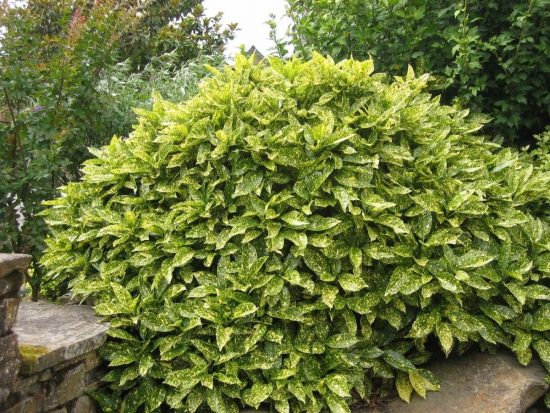
Another gold plant, another japanese plant. I have seen this around town, not this specific cultivar but this species, planted in public parks or along walkways and I did not know what it was. It gave off every appearance of being a tropical houseplant, with the glossy leaves and bright colors and yet its evergreen year round down here in zone 7. I certainly never saw this in Michigan but after moving to Chattanooga I would see it everywhere.
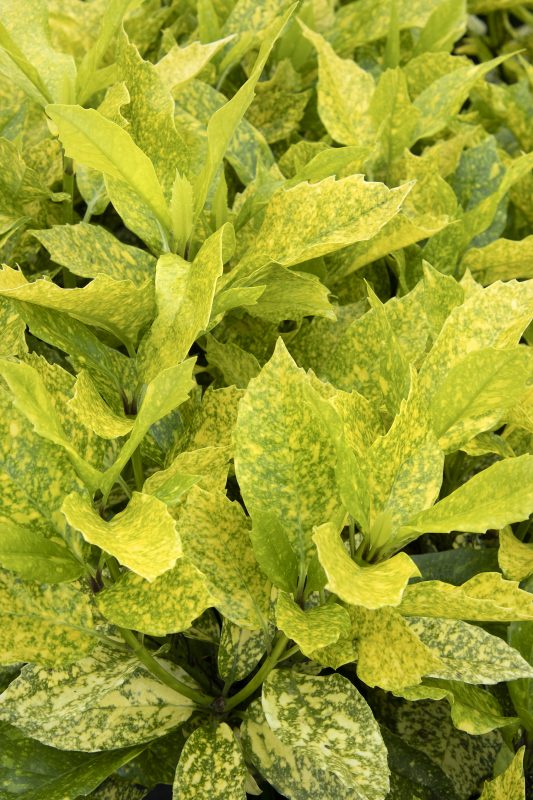
Of course I never saw a label on it so I had no idea what it is, I finally figured out what it was this year and so now I need to buy one.
Hardy in zones 6-10 this guy will grow to 6’x6′ which is pretty big, and it loves deep shade. So with this coloring it can really brighten up a dark spot. Oh, and most importantly, deer don’t like it. Aucuba is dioecious which means there are both male and female plants. This variety is male, but the females will produce bright red berries for added interest. I will probably get several of these because I have so many spots where I could use this. Purchase.
Dats A Nice Daylily
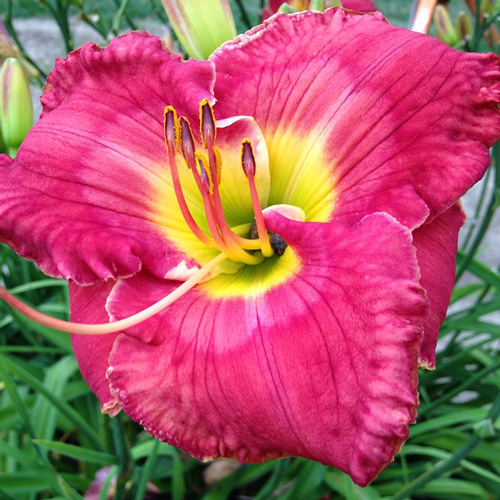
Daylilies used to be my favorite, I collected them, I had dozens of varieties all labeled, including some high end expensive ones. I’ve moved on from them some but I still like them and plant them. I found myself wanting a vibrant pink one and I zeroed in on this variety for its size and other traits.
I have been burned in the past buying higher end daylilies with beautiful blooms. Yes they had beautiful blooms but maybe on anemic foliage, short flower scapes, and maybe only put up 5 or 6 blossoms a season. Now I care less about having the fanciest bloom than I do about it being just overall largely floriferous. I want large blooms and I want a lot of them, fragrance is also nice.
I found this variety, it seems to be what I’m looking for, so it is on the list. Purchase.
Monkey Puzzle Tree
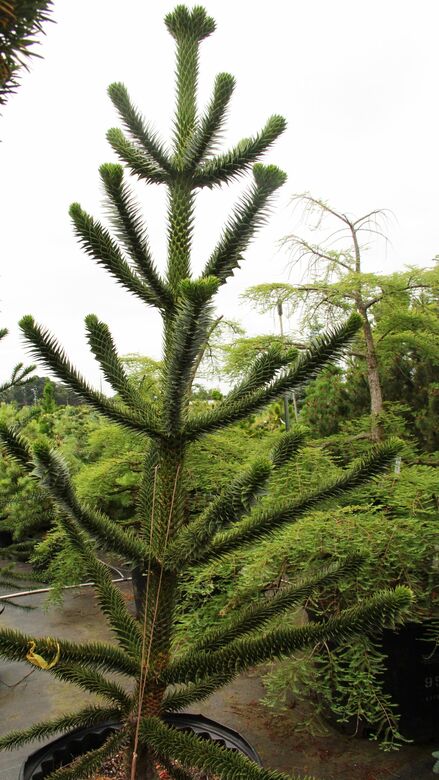
I feel like at this point I don’t need to explain why I like this tree. It is rare, it is unusual, it has a strong structural appearance with an open branching habit covered in spike foliage.
I actually had one, and it was growing great, and then suddenly this Fall it died. I believe something ate the roots. If it was going to die I would have expected death during the winter, because hardiness is always a challenge. Though the variety I get is native to the Andes mountains and so can take the cold, usually this is considered a tropical plant. It didn’t die in the cold though, it died during a pleasant fall, so I’m thinking an animal ate the roots, which has happened to some other plants of mine. I always get very annoyed by this. You spend this money investing in a plant and an animal kills it.
I need this plant in my life though so I will buy another one. I am as of yet undecided if I shall plant it in the same location as last time. Purchase.
Wollemi Pine
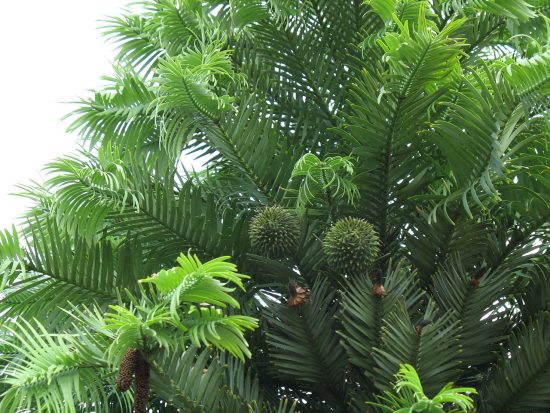
Last, but not least, the wollemi pine. Actually not a pine at all, related to the monkey puzzle tree. Thought to be extinct then discovered in Australia not too long ago (1994) in a rift valley. This is the rarest tree in the world, with less than 100 adults surviving globally.
So rare and unique, check, check.
I cannot find one to buy. Apparently National Geographic sold some to the public years past. You can buy them in Australia, but I cannot find anywhere to get one shipped in or to find a US supplier. I have found one at Conifer Kingdom but its a giant thousand dollar specimen, I want a little one because planting small plants is often better.
Supposedly it is very resilient, is adaptable to a very wide variety of conditions from sun to shade to wet to dry to loose to clay. It is susceptible to at least one fungus in Australia, it is unclear if it would be susceptible to fungus elsewhere. Supposedly hardy down to 10 degrees F, but its so new there isn’t a lot of data here.
The male cones are long and dangle like, well, male parts. The female cones are very large, round, globulous, like, well female parts. It is very interesting looking plant and like nothing else on this planet. All told it looks to me like the love child of a coconut palm and a pine tree. Very tropical feeling. I really want to give it a try. Plus, its an endangered species, so if I can successfully grow one I’m helping to save it. No idea where to purchase.
